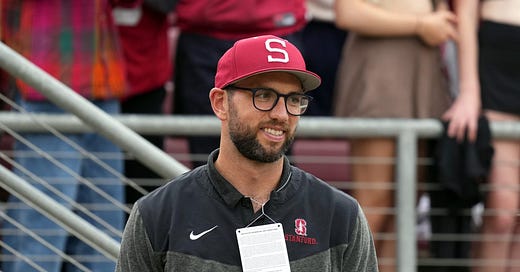Friday Feature: From Sidelines to Front Office
The Legal Takeaways Behind the Rise of Athlete-GMs in College Sports
Introduction
A new front office model is emerging in college athletics. Former athletes are returning to their alma maters in newly created roles as General Managers or Assistant GMs. These positions, once unthinkable at the collegiate level, are now influencing NIL strategy, recruiting, fundraising, and brand development. While the hires of Andrew Luck (Stanford), Maxx Crosby (Eastern Michigan), Trae Young (Oklahoma), Steph Curry (Davidson), and Terance Mann (Florida State) reflect a powerful trend, they also introduce significant legal considerations.
As this practice becomes more common, universities must confront legal and structural questions about how these roles are defined, compensated, and regulated.
Redefining Program Leadership
The historical model, where head coaches controlled all aspects of program building, is no longer sufficient. The new athlete-GM role serves as a blend of personnel director, NIL strategist, and public-facing fundraiser.
At Stanford, Andrew Luck holds a role that places him over the head coach organizationally, with responsibilities spanning football operations, alumni relations, and corporate sponsorships. In contrast, Florida State has positioned Terance Mann, still an active NBA player, in a part-time assistant GM role. Mann is respected and connected, but he is not Florida State’s most famous alum. His hiring invites fair questions about long-term fit and strategic vision. Luck, on the other hand, may be overqualified for a GM role that lacks clear precedent or benchmarks.
Universities must weigh whether these positions are symbolic or operational, and if the hire’s qualifications align with the scale of their authority.
Legal Classification and Risk
At the center of this shift is a question of classification. Are these athlete-GMs employees, independent contractors, or institutional influencers? Trae Young has confirmed that he is employed by the University of Oklahoma, but details of his contract and authority are unclear. Terance Mann is reportedly unpaid but still involved in recruiting and collective-related activity. This ambiguity creates potential exposure.
Programs should prepare for several possible risks:
- Legal liability for failed NIL deals or broken verbal promises
- Regulatory scrutiny over booster-level influence by public-facing GMs
- Confusion over roles in recruiting decisions and NIL negotiation authority
To manage these risks, institutions should implement employment agreements that outline:
- Defined the scope of responsibility
- Chain of command
- Compliance obligations with NCAA and state law
- Termination and indemnification terms
NIL and Perceived Influence
James Harden’s large NIL donation to Arizona State, which preceded a major commitment from a five-star recruit, underscores the blurry line between donor, recruiter, and front-office influencer. When highly visible alumni are embedded in university operations, transparency becomes essential.
Athlete-GMs must understand that even well-meaning involvement could raise legal and ethical questions. Conversations with recruits, input on collective funding decisions, and public statements can all implicate the university.
Future regulation may impose new boundaries on this type of involvement, especially after the House settlement. Schools should be proactive now in setting internal guidelines and disclosure rules.
Looking Ahead: Predictions and Compliance Takeaways
This model is unlikely to disappear. However, for it to mature responsibly, institutions should expect:
1. Standardized contracts for athlete-GMs, including compliance and reporting requirements
2. NCAA or congressional oversight addressing employment status and booster crossover
3. New best practices for internal legal and compliance teams to review GM involvement
4. Potential litigation stemming from overreach, miscommunication, or NIL inducement claims
The athlete-GM is a promising concept. When governed by strong policies and clarity of purpose, it offers a way to align institutional loyalty with modern recruiting demands. Without those structures, however, it poses serious risks.
Final Thoughts
The rise of athlete-GMs is not just a feel-good story. It reflects a deeper professionalization of college athletics with real legal and strategic implications. Institutions must evolve their internal controls to match this transformation. The programs that take these roles seriously, from both a compliance and business perspective, will be best positioned to succeed in the NIL era.





